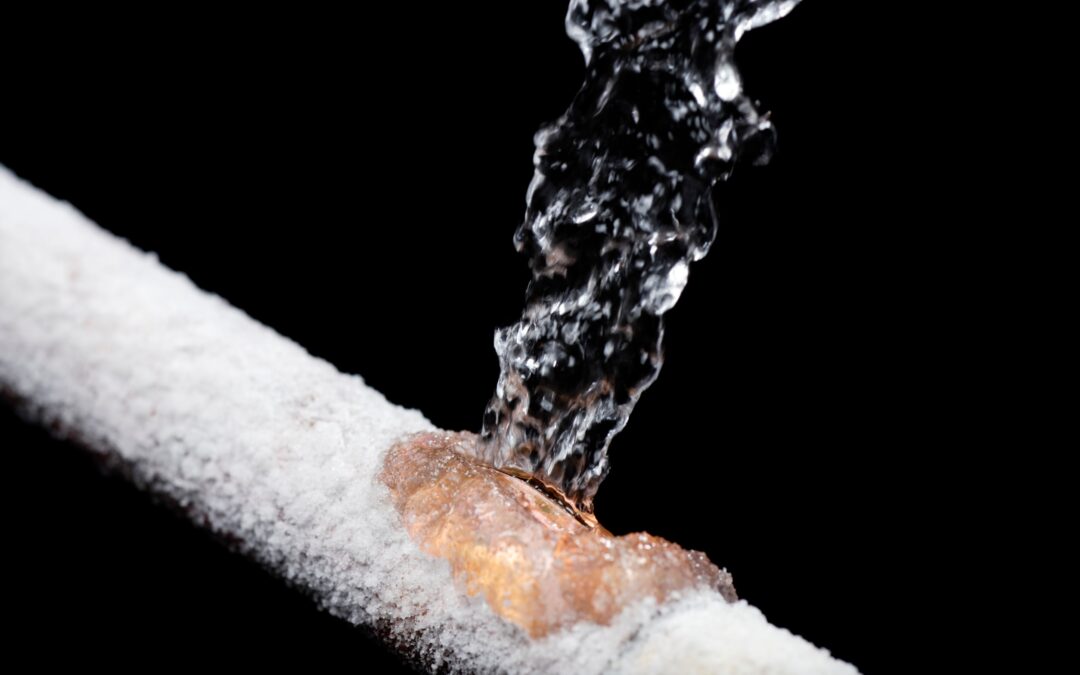If the temperatures near your home fall below 32 F, you may discover one of your pipes has frozen. Unfortunately, here in St. Louis, we have seen more than our share of frigid days this winter, and there may be more to come.
Frozen pipes present a potential hazard to your property and your bank account. Water expanding as it freezes inside frozen pipes causes an increase in pressure. With extreme enough pressure, pipes, particularly plastic ones, can burst, damaging buildings and your belongings.
Your repair costs resulting from burst pipes can be substantial. So if you have frozen pipes, here are seven steps you can take for thawing pipes before disaster hits.
1. Identify the frozen pipes. You should be conscious of several signs of frozen pipes. You may notice leaks, a drop in water pressure, or no water flow at all from a faucet. If you suspect you have a frozen pipe, turning on all the taps in the building will point you toward the location.
You may also observe ice or frost forming on the outside of your pipes. Your uninsulated pipes and those on exposed outer walls will be most vulnerable to freezing. A lack of flow in any of your faucets indicates that your main water line may be frozen.
2. Assemble your tools. You’ll need to proceed with the process of thawing your frozen pipes gradually over the course of 30 minutes to an hour. Never use an open flame. Not only can a flame damage the surroundings of a pipe, but it can also melt the plastic water lines themselves. Polyethylene pipes are especially susceptible to excessive heat.
This list highlights some tools you may need to unfreeze pipes.
- Drywall knife
- Reciprocating saw
- Hair dryer
- Heat tape
- Space Heater
- Pipe insulation
- Towel
3. Turn on the faucet. Turn on the faucet most adjacent to the pipe you’ll be thawing. If even a small amount of water flows through it, the pipe won’t freeze completely. Should no water be flowing, relieving the pressure by keeping the faucet open reduces the chance the pipe will burst.
4. Expose the pipe. Your pipe may be inside a wall, behind a ceiling or under a floor. Before you can start thawing the line, you may need to cut a hole and visualize the pipe to apply heat directly. Once you have the pipe exposed, you can also check for measures you can take to prevent a recurrence. Your possible interventions include wrapping pipes with insulation or applying heat tape.
5. Apply heat. You can choose from methods including heat tape, a hair dryer or a space heater. Since all of these require electricity, ensure no water is leaking in the area where you plug them in. The flow of water through the faucet will allow you to judge how the thawing process is progressing. Even after you’ve restored normal water pressure, you may want to keep the heat on to prevent refreezing.
6. Check for leaks. While water from a burst pipe may be obvious, freezing can cause small, less noticeable leaks in pipes. Wipe a thawed pipe down completely to check for moisture.
7. Call a plumber. If you suspect your pipes have been compromised, turn off the water to the whole building and call a certified plumber who can check for pipe damage you didn’t detect and perform any necessary repairs.
Feeling overwhelmed?
If following all these steps seems daunting, your best option may be to skip to step seven. The experts from Bieg Plumbing have served St. Louis for over 60 years. We have the know-how and the tools to get the job done right. Our red vans are ready to be dispatched. So give us a call.
Frozen pipes got you stuck? Call in the red truck!

